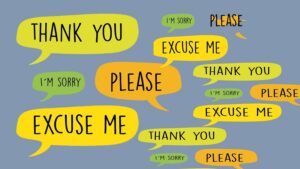The Ultimate Puberty Book for Boys
 The Ultimate Puberty Book for Boys
The Ultimate Puberty Book for Boys
Puberty can be a confusing and sometimes overwhelming experience for boys. As bodies change, emotions fluctuate, and new questions arise, it’s important to have a reliable guide that provides accurate information, practical advice, and a reassuring tone. An ideal puberty book for boys should be more than just a resource for physical changes—it should be a trusted companion that helps young readers navigate this transformative period of their lives with confidence and understanding. Here’s what would make up the ultimate puberty book for boys.
1. Comprehensive Coverage of Physical Changes
One of the most critical aspects of a puberty book is an in-depth yet accessible explanation of the physical changes boys will experience. This includes:
- Growth Spurts and Body Changes: Detailed information about height and weight growth, changes in body shape, and the development of muscles. It should also address the appearance of body hair, voice changes, and changes in skin conditions, such as acne.
- Reproductive Health: Clear, straightforward explanations of changes in the reproductive system, including erections, wet dreams, and the onset of fertility. It should provide a factual overview of how these processes work and emphasize that these changes are normal and nothing to be ashamed of.
- Personal Hygiene: Practical advice on new hygiene needs, such as managing body odor, skin care, and grooming, with tips on building a routine that helps them feel clean and confident.
2. Emotional and Mental Health Guidance
Puberty is not just a time of physical changes but also emotional ones. The ultimate puberty book for boys should address:
- Mood Swings and Emotions: Insight into why they might feel more emotional or irritable, along with practical tips on managing stress, anger, or sadness. This can help boys understand that emotional shifts are a normal part of growing up.
- Mental Health Awareness: An introduction to the importance of mental health, including recognizing signs of anxiety, depression, or stress. The book should encourage seeking help when needed and emphasize that talking about mental health is as important as physical health.
- Developing Self-Esteem: Chapters on building confidence and self-esteem, dealing with peer pressure, and understanding that everyone develops at their own pace. The book should promote a positive body image and self-acceptance.
3. Navigating Social Changes
As boys go through puberty, their social world changes too. The book should provide:
- Friendships and Peer Pressure: Advice on navigating changing friendships, dealing with cliques, and understanding peer pressure. It should help boys identify healthy relationships and resist the pressure to conform to harmful behaviors.
- Family Dynamics: Guidance on how to communicate effectively with family members, who might not always seem to understand what they’re going through. This section should emphasize the importance of family support.
- Crushes and Relationships: Honest discussions about developing romantic feelings, respecting boundaries, and understanding consent. It’s important to provide guidance on how to navigate these new emotions in a respectful and healthy way.
4. Practical Life Skills
Puberty is a time when boys start to gain more independence. The ultimate guide should include:
- Time Management and Responsibility: Tips on managing schoolwork, extracurricular activities, and personal time. Emphasizing the importance of organization and responsibility helps in building a strong foundation for future success.
- Decision Making and Problem Solving: Strategies for making good decisions, handling mistakes, and learning from them. Encouraging a growth mindset helps boys view challenges as opportunities to learn and grow.
- Introduction to Finances: Basic information on managing money, budgeting, and understanding the value of saving, tailored to a young audience, can be empowering as they begin to take on more responsibility.
5. Inclusivity and Diversity
The ultimate puberty book should reflect the diversity of experiences and backgrounds. It should:
- Represent Different Body Types and Backgrounds: Featuring illustrations and stories that reflect various races, ethnicities, and body types helps all readers feel seen and included.
- Address Different Gender Identities and Sexual Orientations: It’s crucial to acknowledge that not all boys are cisgender or heterosexual. Providing supportive information on gender identity and sexual orientation can help all readers feel understood and respected.
6. Interactive and Engaging Format
To keep boys engaged, the book should include:
- Illustrations and Diagrams: Clear, age-appropriate illustrations that depict the changes boys go through can make complex information easier to understand.
- Quizzes and Reflection Questions: Interactive elements that encourage boys to think about their own experiences, helping them apply what they’re learning to their own lives.
- Stories and Testimonials: Real-life stories from other boys or young men can make the book more relatable and show that everyone’s journey is unique.
7. Parent and Caregiver Guide
A section for parents and caregivers can help them support their child during this time. This can include:
- Conversation Starters: Tips for how to talk about sensitive topics and encourage open communication.
- Resources for Further Support: Suggestions for books, websites, and organizations that can provide additional information and support.
Conclusion
The ultimate puberty book for boys should be a comprehensive, supportive, and engaging resource that covers the physical, emotional, and social changes of puberty. It should empower boys with knowledge, help them develop a positive self-image, and guide them in making healthy, informed choices. By providing a balanced mix of factual information, practical advice, and emotional support, such a book can be an invaluable tool for navigating the journey from childhood to adolescence with confidence and clarity
Share this content:






















Post Comment